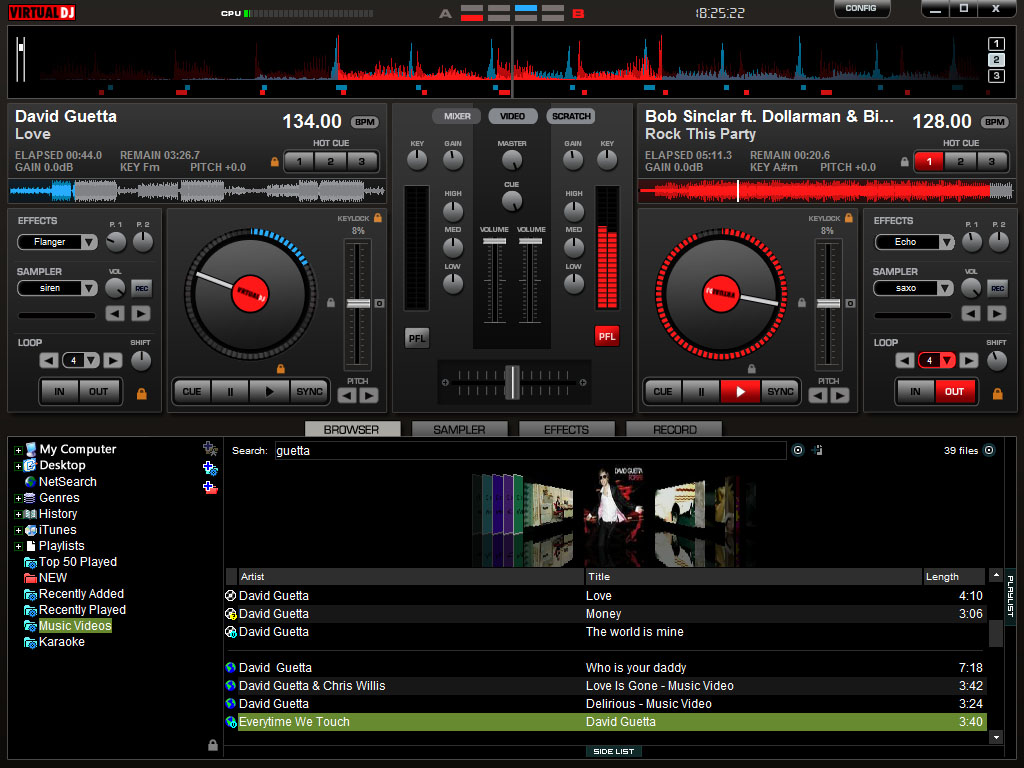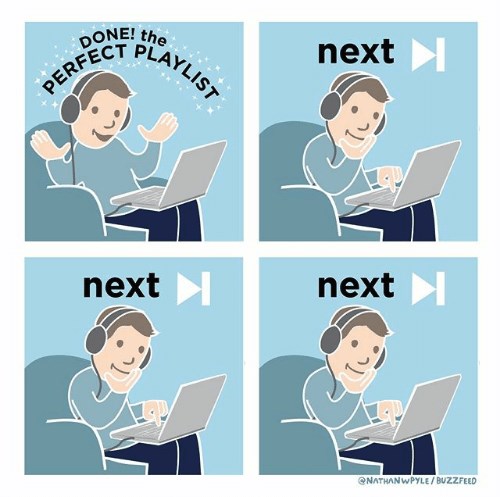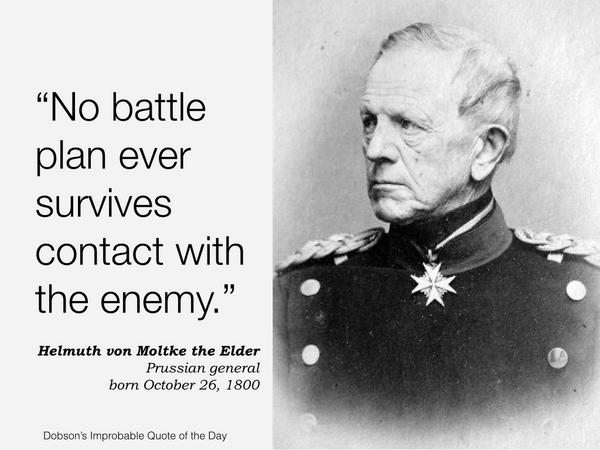In my experience, as DJs gain more experience, they go through several phases. I’d like to discuss them today, to help my friends who are just starting out DJing dances think about how to level up their DJ game as quickly as possible:

Phase 1: The “Music I Like” DJ
This is where most DJs begin their journey: they have created a nice little collection of music they love to dance to, and they create playlists from that. It’s all of their favorite songs, and they’re able to put together 1-3 hours sets containing only songs they enjoy.
This is a great start, and the community can always use eager people willing to volunteer their time to DJ for us! But the fundamental problem with this style of DJing is that it fails to account for other people’s tastes. By creating playlists that appeal perfectly to one person’s preferences, you may accidentally also be creating playlists that don’t appeal at all to other dancers who come to your dance!
Eventually most DJs notice this and begin to move into Phase 2.
Phase 2: The “Music the Dancers Like” DJ
These DJs have expanded their collection to include the most popular songs for their dance style - even the ones they personally don’t like. Their playlists still contain some of their absolute favorites and some guilty pleasures, of course - but the majority of their set is designed to appeal to their audience rather than their personal tastes.
This is a huge improvement from the first phase of DJ’ing because by taking other people’s tastes into account, you will rarely have your dancers going home thinking “man, that DJ didn’t play a song I liked all night!” But DJs in this phase often give little thought to the progression of their music throughout the night - whether their transitions between songs makes sense, and whether they are playing so many similar songs in a row that their dancers who would prefer something different are getting bored.
As DJs endeavor to bump their game up to the next level, they move on to Phase 3.
Phase 3: The “Perfect Playlist” DJ
These DJs invest a lot of time, love, and energy into their playlists. They pick the first song carefully, making sure that their first song is a popular one that kicks off their set with a bang and gets everyone on the floor. They pay close attention to transitions between songs, making sure not to have too many songs of the same tempo/style in a row, to give their dancers a breather between fast songs, and making sure that the vibe doesn’t become sleepy with too many slow songs in a row.

They also make sure that their dancers with particular tastes don’t have to go too long between songs that they really love - trying to mix in various styles at regular intervals. This gives their dancers a nice rhythm for the evening, taking social breaks on the songs they like less, but knowing it will only be 5-10 minutes until a song they will love is played. Everyone needs to take breaks sometimes, that’s expected. But we’ve all had the disappointing experience of going 15-20 minutes without hearing a song that really makes us want to jump up and dance.
But crowds change, tastes change, popular songs become played out, and we all know that the difference in vibe between late night dancing and early evening dancing is like night and day. So a great playlist, while it is a great start, still isn’t the top tier of DJing.
Phase 4: The “Handcrafted Playlist” DJ
These DJs create a playlist as a starting point, but know the old saying that “no playlist ever survives contact with the dancers.”

Because every crowd, every event, every evening is different, these DJs update their playlists on the fly based on who showed up and what the energy level of the room is like. If they see a large group of people sitting down for a while, they keep changing songs until they manage to play something that gets them on the floor. As they do this, they learn the tastes of the various cliques of dancers while still feeling out and shaping the vibe of the evening. As the evening gets late, they play more slower songs, but also know that songs with a slow tempo (BPM) can nonetheless have very high energy.
They also know their community and play songs appropriate for the hour. We all know that as the evening goes on, the dance (and the crowd of dancers) evolves in predictable ways. Many West Coast Swing events accommodate junior dancers - this is great, but it means that songs with profane lyrics are better played at 2am than at 10pm. Likewise, they know that their older dancers will love to hear hit songs from decades past, and will plan to play those earlier in the evening when the crowd will best enjoy it.
Conclusion
As I’ve worked on my own DJing, I’ve managed to journey through the first 3 phases of DJing, and am now challenging myself to become a true Phase 4 DJ. If you are a DJ or an aspiring DJ, I hope that this article gives you some things to think about to find ways to up your own DJ game!
There’s nothing better than playing music for an energetic crowd all night, and then having people with varying tastes in music come up to you afterward and tell you they loved your set - that’s how we know we’ve really done our job well and created something special!
